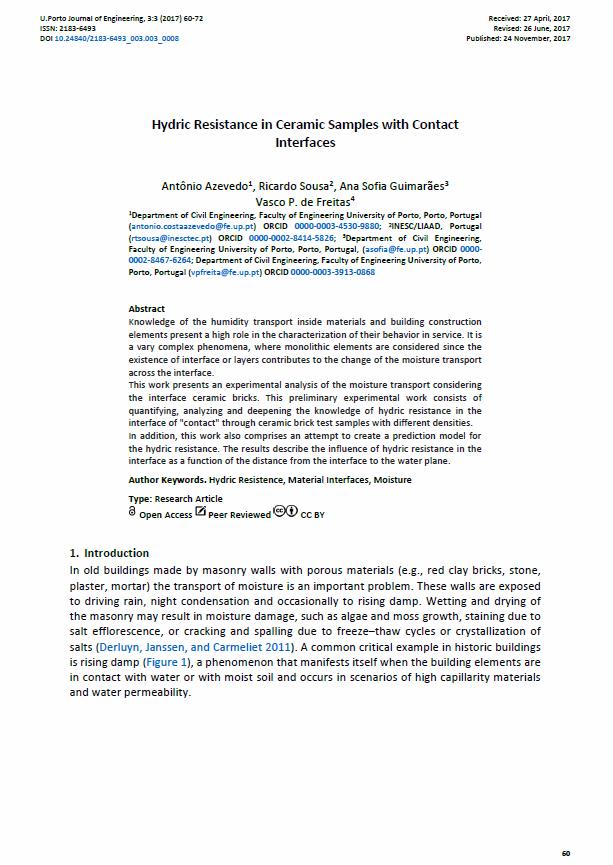Hydric Resistance in Ceramic Samples with Contact Interfaces
Main Article Content
Abstract
Knowledge of the humidity transport inside materials and building construction elements present a high role in the characterization of their behavior in service. It is a vary complex phenomena, where monolithic elements are considered since the existence of interface or layers contributes to the change of the moisture transport across the interface. This work presents an experimental analysis of the moisture transport considering the interface ceramic bricks. This preliminary experimental work consists of quantifying, analyzing and deepening the knowledge of hydric resistance in the interface of "contact" through ceramic brick test samples with different densities. In addition, this work also comprises an attempt to create a prediction model for the hydric resistance. The results describe the influence of hydric resistance in the interface as a function of the distance from the interface to the water plane.
Downloads
Article Details
Authors who publish with this journal agree to the following terms:
- Authors retain copyright and grant the journal right of first publication with the work simultaneously licensed under a Creative Commons Attribution License that allows others to share the work with an acknowledgement of the work's authorship and initial publication in this journal.
- Authors grant the journal the rights to provide the article in all forms and media so the article can be used on the latest technology even after publication and ensure its long-term preservation.
- Authors are able to enter into separate, additional contractual arrangements for the non-exclusive distribution of the journal's published version of the work (e.g., post it to an institutional repository or publish it in a book), with an acknowledgement of its initial publication in this journal.
- Authors are permitted and encouraged to post their work online (e.g., in institutional repositories or on their website) prior to and during the submission process, as it can lead to productive exchanges, as well as earlier and greater citation of published work (See The Effect of Open Access).

